Plants with a healing effect >>>> Lotus as a medicinal plant - properties and nutritional value
Lotus as a medicinal plant - properties and nutritional value.
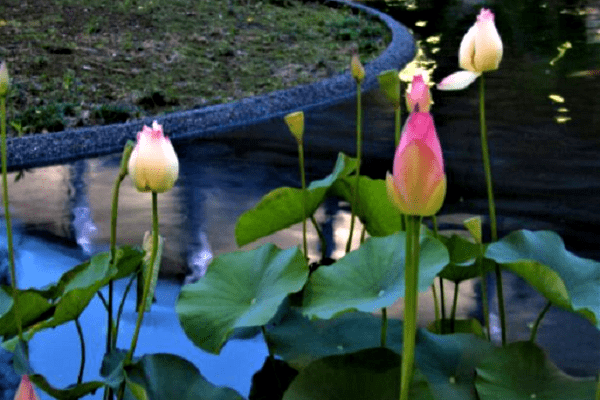
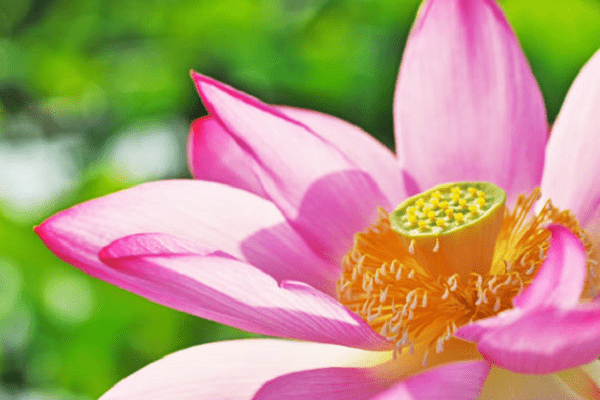
The relict plant Lotus - one of the exotic plants with amazing beauty ("Water Magnolia"), unusual habitats and a wide range of qualities useful for health and nutrition - it is not without reason that it acquired the name "Flower of Life" from the earliest times. This plant is the very personification of life, since it does not survive in all reservoirs, but only in warm stagnant waters with a silty bottom surface, but it also manages to take root in an unusual climate.
The birthplace of Lotus is the coastal zone of the Nile River (Egypt, Africa), but the plant so quickly gained popularity among natural medicine plants that it was transported and took root in almost all regions of the world where temperature conditions and features of the water element allowed it to survive. Later, plant varieties appeared that winter well in freezing reservoirs. And now the ancient African exotic can be observed in the floodplains of rivers flowing in regions with climate change and fairly low winter temperatures.
The plant calmly lies in the form of seeds - nuts at the bottom of the reservoir for as long as it takes to wait for favorable conditions for germination. Although the plant does not like running water, only backwaters and still water, it grows well along the banks with slow flowing rivers. Lotus grows in dams, estuaries of the seas and oceans, floodplains of rivers, loves soft and nutritious soil from silty sediments. Undoubtedly, it was the endurance and vitality of the plant's seeds that contributed to its popularity as the Flower of Life - able to survive after a long period of dormancy. The spread of the Lotus around the world was facilitated by its unusually versatile properties of seed-nuts, capable of retaining their vegetative properties after long-term storage.

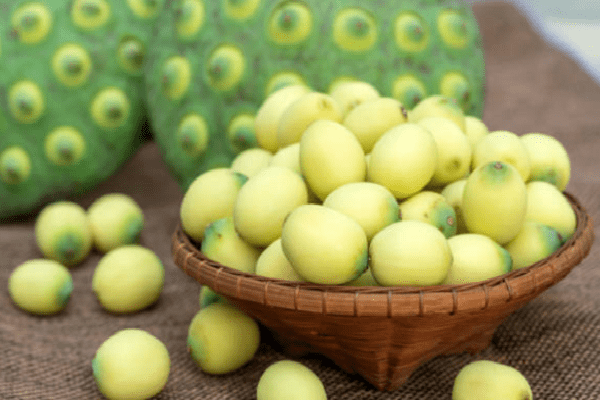
Despite the fact that the Lotus as a medicinal plant gained its popularity for a very long time, not all parts of the plant are safe and healthy. So very poisonous are the leaf petioles and sepals of lotus flowers - they are cut off at the stage of collecting the plant ingredients of the lotus. It is also worth knowing that not all types of the Lotus plant are suitable for human consumption. The petioles and stems of the plant, as well as the germinated seeds of the Lotus and its young seedlings, contain a very high percentage of alkaloids - natural poisons, which makes it impossible and dangerous to eat these parts of the plant. Old Lotus leaves are also not eaten - only young growth of the plant.
There are absolutely decorative varieties of Lotus that are quite dangerous for eating - they are bred to decorate water bodies: small natural or artificially created lakes in reserves, in parks or home ponds. But if it is necessary to breed a plant in order not only to decorate the reservoir, but also with the intention of collecting it for the preparation of phytoproducts and food components, a species of Lotus called "Nelumbo nucifera" is bred - Nelumbo nucifera and its hybrid species.
The lotus symbolizes health and longevity. The vitamin selection in the Lotus composition includes such vitamins of longevity and recovery as group B and vitamin A (beta-carotene) , vitamin C, as well as very rare and healthy minerals Selenium, Zinc, Potassium. Lotus nuts have a sufficient supply of fats and sugars, which makes them nutritious food components (high in calories).

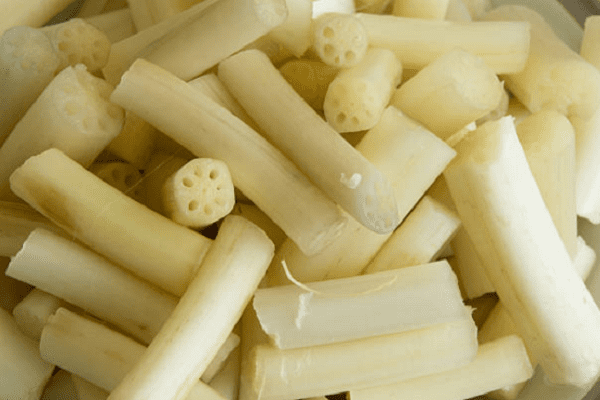
The roots of the plant taste like sweet potato tubers. The cores of Lotus seeds have a natural nutty flavor, and toasted and burst seeds are a substitute for such a popular treat as popcorn.
The leaves (necessarily without petioles) are endowed with the taste of the leafy form of cabbage or lettuce leaves, which determines their use as greens in raw, pickled, sautéed or boiled form.
Lotus stems are good in heat treatment: sautéed, boiled, fried by themselves or in batter.
Lotus seeds have been successful with people looking for sources of energy in the body for a reason. The multifaceted properties of the substances that make up the lotus nuts make it possible to use it both as nutritional components and as healing, regenerating tissue, therapeutic components.
The healing properties of the Lotus can simultaneously play the role of a source of problems for the health of the body, since the tonic substances in the Lotus nuts can stimulate not only the work of the heart muscle, but also start the mechanism of contraction of the muscles of the uterus, which will provoke a miscarriage or early childbirth. These features of the Lotus should be taken into account when eaten and as a remedy, and contraindications to its use should not be neglected. It is contraindicated to use the Lotus plant for food or for medicinal purposes for pregnant and lactating women, as well as for people with heart rhythm disturbances (arrhythmias).
The unexplored properties of Lotus nuts can become a provoking moment in the development of food allergic reactions, which is recommended to be taken into account when using Lotus seeds by children, nursing mothers and people prone to food allergies or already having allergic diseases (for example, atopic dermatitis, asthma, psoriasis , eczema and others).
The nutritional properties and medicinal properties of the plant components of Lotus are useful for gastrointestinal problems, but are categorically unacceptable for gastrointestinal diseases associated with inflammatory processes in the gastrointestinal tract. The healing properties of Lotus in the field of gastroenterological problems are associated exclusively with stimulating the enzymatic activity of the gastrointestinal tract to improve digestion in case of enzyme deficiency, but with excessive active enzymatic activity, increased enzymatic activity, the adoption of medicinal components from the Lotus plant is contraindicated, and in such cases they try to use the plant not in food raw or in the form of infusions, and in boiled, fried form, that is, in the form of any heat treatment with high temperatures, which will leave a pleasant taste sensation, but will not harm the digestive organs and the digestive process in general.
Decoctions of Lotus are used as anti-inflammatory agents for the gastrointestinal tract exclusively in cases of inflammation accompanied by diarrhea, but not constipation and colitis. The fortifying effect of Lotus seeds is useful for diarrhea, but it is dangerous with reduced intestinal motility, constipation (both chronic and isolated), with colitis and ulcers of the walls of the stomach and intestines. Teas made from lotus leaves and flowers (made from fresh or dried petals) are popular.
Although extracts from plant parts (oils, infusions, creams) are considered good anti-inflammatory agents, the action of such agents is designed for external use, which is safely used in cosmetology and dentistry (applications, rinsing). But these same extracts can cause burns to the mucous membrane of the eye, the mucous membrane lining the female genital organs from the inside.
Do not forget that almost all the nutrients in the Lotus plant are chemically active, and the intake of plant components in food may not be as harmless as it seems. It is especially worthwhile to be wary of plant components that are not grown independently, bought from hands, collected from an unverified reservoir, where plants that are absolutely not suitable for food or for phytotherapy can grow exclusively of decorative orientation. It should be borne in mind that as some parts of edible Lotus plants can be deadly poisonous, so all parts of the Lotus plant of some species can be poisonous.
The Lotus plant in natural medicine has gained its popularity as a sexual stimulant and immunostimulant. Such special properties of the plant are provided by substances with pronounced properties of natural vascular stimulants (stimulation of circulatory activity), which lead the cardiovascular, and with it the nervous system, into an excited state, which is felt as a surge of energy. And the body in a state of energy tone is able to withstand diseases of an infectious nature (it includes a mechanism of increased resistance to external environmental influences). Of course, preparations from the components of the Lotus plant cannot be called antiseptics, but they are able to create barriers on the surface of mucous membranes and skin due to the astringent and tanning action, which creates barriers to irritating effects.
For people with increased blood clotting, the use of Lotus is undesirable due to its astringent and hemostatic properties, which can aggravate the situation. The same contraindications for the use of Lotus components exist for people with varicose veins and a tendency to increased thrombus formation.
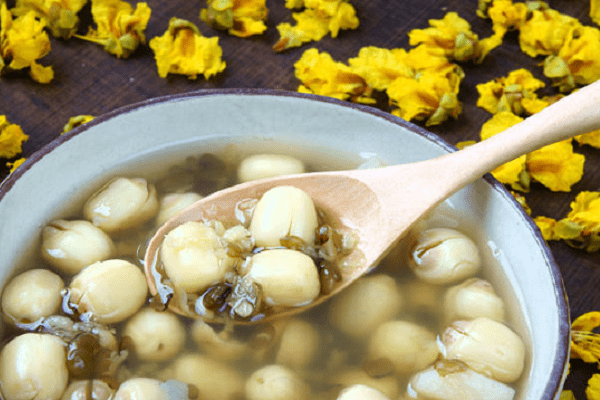
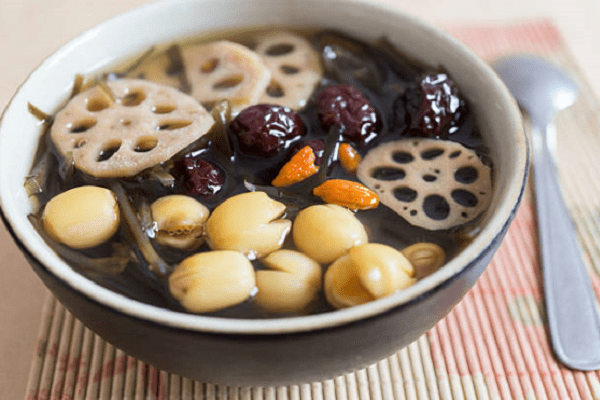
In case of diabetes, it is not recommended to get too carried away with the intake of the roots and flowers of the Lotus in food, since these parts of the plants contain the highest levels of sugars, at the same time, it is these types of sugars that are not so harmful for diabetics, which makes it possible to eat Lotus nuts in moderate form in fried or boiled, and the roots in boiled and sautéed form for food.
The lotus is an indicator of sunlight and always turns its flowers towards the sun, which gave the name to this property - heliotropism.
The lotus is not only facing the sun, but also knows how to concentrate solar energy into heat, it is for this reason that its flowers and buds have the ability to heat up and retain heat, which creates the illusion of "warm-bloodedness" of the plant, endowing it with the signs of a living being. The depressions in the middle of the leaves also heat up at the Lotus, and the water accumulating in them at high temperatures can significantly heat up. This concentration of heat in the flower and leaves for a long time allows some species of insects that pollinate the plant to spend the night inside the flower when it closes or in the depths of the leaf.
But the flowering of the Lotus does not last long, a maximum of three to four days, then the petals quickly fall off, which is very important to consider when choosing the time for harvesting flowers (petals, in particular, for the production of essential oils).
You should know that the closest relative of the Lotus, Water Lily, does not have edible species, but, on the contrary, is found in varieties with extremely toxic properties, which requires care and knowledge of collecting Lotus components for healing and nutrition.
A feature that distinguishes the Lotus from the Water Lily is a specific water-repellent layer on the surface of the Lotus leaves, giving off a bluish, gray-blue, gray tint, which is not observed on the leaves of Water Lilies (even giant ones). It is this bluish shade that creates a muted green color in the Lotus leaves, in contrast to the bright shades of green in the leaves of Water Lilies.

Read

Read



























